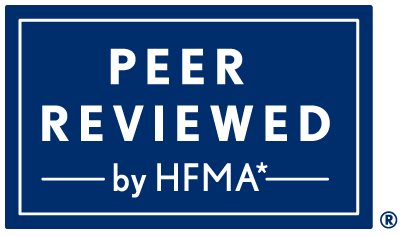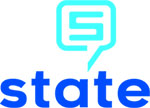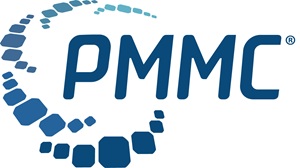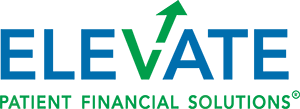HFMA Peer Review
The Peer Review Program is a way for HFMA members to identify what healthcare business solutions their peers are using to deliver organizational savings and performance improvements.

Completing the HFMA Peer Review process and getting on the SHORT LIST means that your product or service has demonstrated that it provides a return on investment; can improve productivity or process effectiveness; meets its promoted benefits; and is accurate, effective, and easy to use.
Interested in HFMA Peer Review?
Learn about the SHORT LIST.
The SHORT LIST
The SHORT LIST products, services, and ROI calculators have earned the designation “Peer Reviewed by HFMA”, meaning that they’ve been evaluated by users like you for quality, technical support, customer service, and value.
Understanding Peer Review Short List Product Categories
- AP/Corporate Payment Solutions: Systems and services that automate and manage an organization’s accounts payable processes, including invoice processing, vendor payments (e.g., ACH, virtual cards), and expense management, specifically tailored for healthcare operational needs.
- Banking/Financial Services: Financial institutions and services providing specialized solutions for healthcare organizations, such as treasury management, lines of credit, equipment financing, real estate loans, investment banking, and revenue cycle support.
- Benchmarking/Performance Management: The process of comparing a healthcare organization’s financial, operational, and clinical performance metrics against industry peers or best practices to identify areas for improvement and track progress towards goals.
- Billing Compliance/Fraud & Abuse: Adherence to federal, state, and payer regulations governing medical billing, and the prevention, detection, and correction of intentional deception (fraud) or practices inconsistent with accepted standards (abuse) that result in improper payments.
- Coding: The translation of medical diagnoses, procedures, services, and supplies into universal alphanumeric codes (e.g., ICD-10, CPT, HCPCS) used for patient records, billing, and data analysis.
- Collection & A/R Debt Recovery: Processes and strategies used by healthcare providers to collect overdue patient balances (Accounts Receivable), including internal efforts and the use of third-party agencies for debt recovery.
- Decision Support: Tools and systems, often Clinical Decision Support Systems (CDSS), that analyze patient and financial data to provide insights and recommendations, helping clinicians and administrators make informed decisions regarding patient care, resource allocation, and financial management.
- Denial Management/Third Party Recovery: The process of identifying, analyzing, appealing, and preventing denied claims from payers, as well as identifying and pursuing payment from liable third parties (e.g., accident insurance) when applicable.
- Early Out/Self Pay: A collections strategy where patient accounts (often for uninsured/self-pay patients) are placed with a third-party vendor early in the delinquency cycle, typically offering payment plans or discounts before the account ages significantly or goes to bad debt.
- Enterprise Resource Management & ERP: Integrated software systems used by healthcare organizations to manage and automate core business functions like finance, accounting, supply chain, human resources, and potentially aspects of patient management, improving data flow and efficiency.
- Operations/Clinical Performance Management: The systematic monitoring, evaluation, and improvement of healthcare delivery processes (operations) and patient care quality/outcomes (clinical performance) using data and analytics to drive efficiency and effectiveness.
- Patient Access/Eligibility: The front-end functions of the revenue cycle focused on patient registration, scheduling, insurance verification, pre-authorization, and determining patient eligibility for services and benefits.
- Patient Accounting/Revenue Cycle Systems: Software and systems used to manage all aspects of the patient financial journey, from charge capture and billing to payment posting, collections, and reporting; often used interchangeably with Revenue Cycle Management (RCM) systems.
- Patient Financial Experience: The patient’s overall perception and interaction with the financial aspects of their healthcare, including price transparency, understanding bills, payment options, financial counseling, and ease of payment.
- Patient Financing: Programs, often offered through third-party companies, that allow patients to pay their out-of-pocket medical expenses over time through structured payment plans, making healthcare more affordable.
- Reimbursement: The payment received by healthcare providers from payers (like Medicare, Medicaid, commercial insurance) and patients for the medical services and procedures delivered.
- Revenue Cycle Outsourcing: Contracting with an external company to manage specific parts or the entirety of a healthcare organization’s revenue cycle functions, such as billing, coding, collections, or denial management.
































